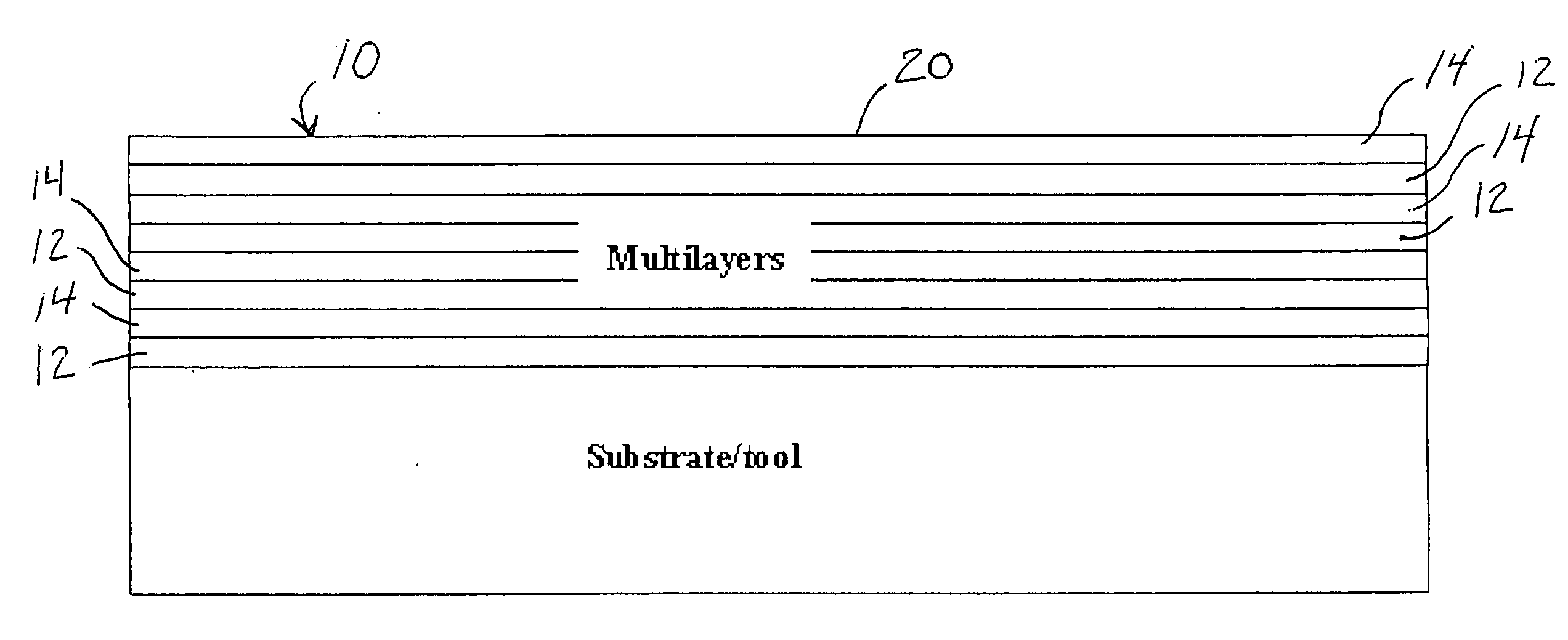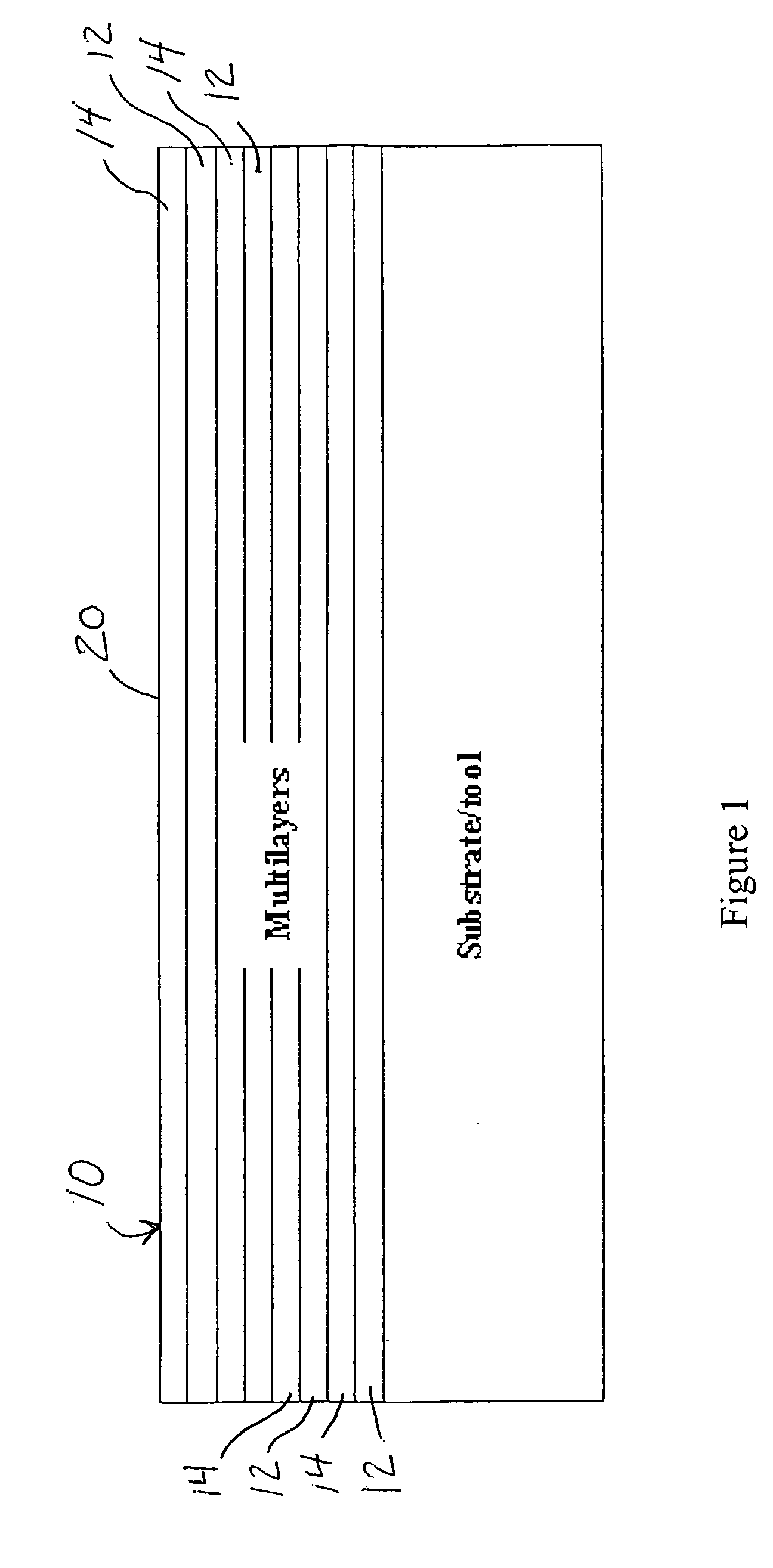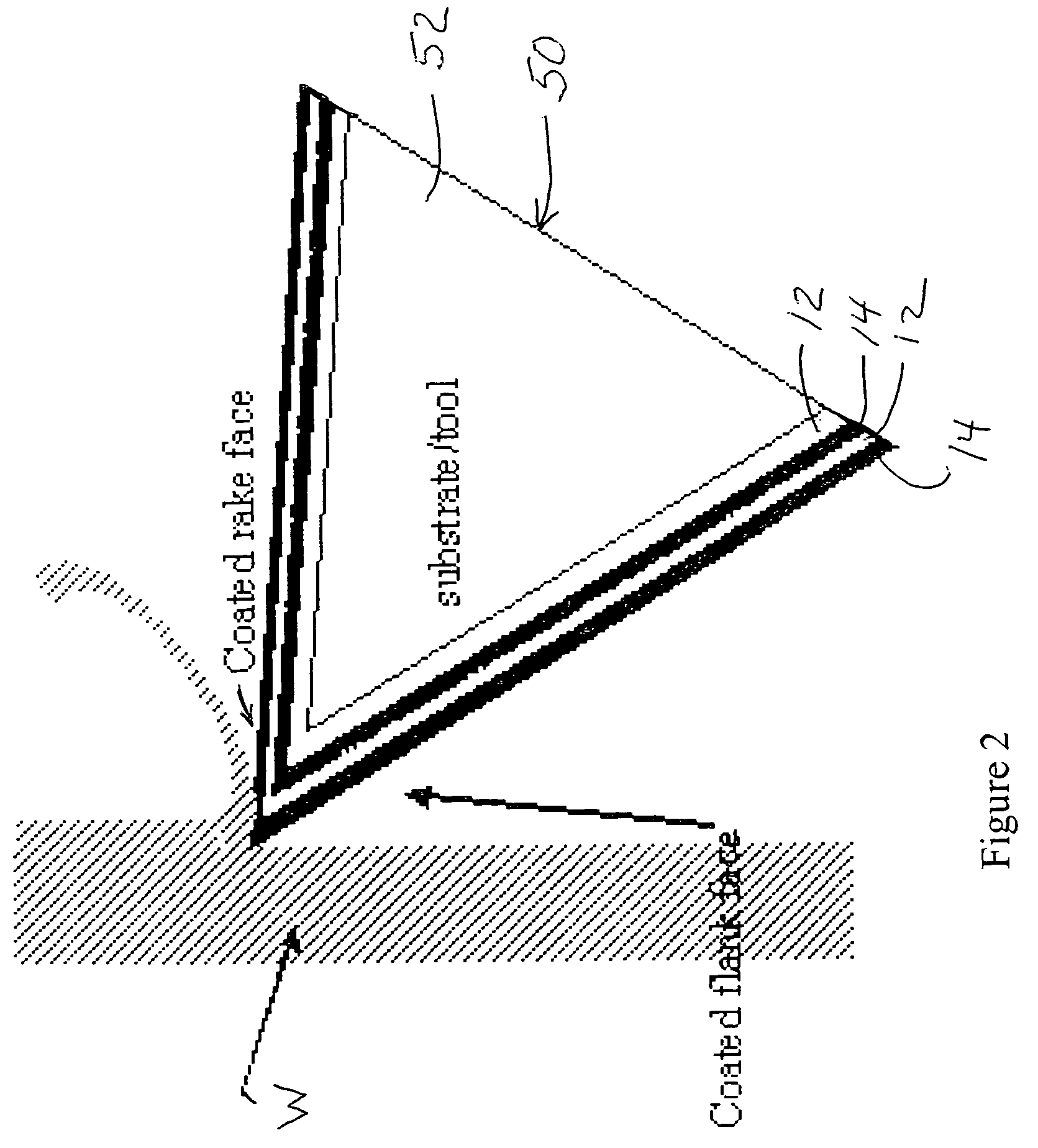Reduced-friction coatings
a coating and friction technology, applied in the field of coatings, can solve the problems of loss of phase structure control, destabilization of bulk structure, loss of ag to the surface, etc., and achieve the effects of reducing friction, reducing wear and temperature, and reducing energy
- Summary
- Abstract
- Description
- Claims
- Application Information
AI Technical Summary
Benefits of technology
Problems solved by technology
Method used
Image
Examples
examples
[0030]Samples were prepared by sputter deposition in a closed-field dual cathode unbalanced magnetron system. The cryo pumped system has a base pressure of 4×10−7 Torr and includes a high vacuum load lock chamber. There are two vertically mounted 12.8×40.6 cm planar magnetron cathodes facing each other on opposite sides of the substrate holder and 10 cm from the substrates. The hexagonal substrate holder is just large enough to eliminate the cross contamination from the other cathode. The substrate holder can be rotated at 5-15.2 rpm to produce nano-layered materials with controlled layer thickness. All coatings were 1 to 1.5 μm thick in total thickness. The substrates were single crystal Si (001), glass sides, and polished M50 tool steel discs. Sapphire substrates were used in cases where high temperature anneals were to be carried out. Prior to deposition the samples were cleaned in an ultrasonic bath of methanol. All reactive sputter depositions were carried out under a total pre...
PUM
| Property | Measurement | Unit |
|---|---|---|
| thickness | aaaaa | aaaaa |
| temperatures | aaaaa | aaaaa |
| pressure | aaaaa | aaaaa |
Abstract
Description
Claims
Application Information
 Login to View More
Login to View More - R&D
- Intellectual Property
- Life Sciences
- Materials
- Tech Scout
- Unparalleled Data Quality
- Higher Quality Content
- 60% Fewer Hallucinations
Browse by: Latest US Patents, China's latest patents, Technical Efficacy Thesaurus, Application Domain, Technology Topic, Popular Technical Reports.
© 2025 PatSnap. All rights reserved.Legal|Privacy policy|Modern Slavery Act Transparency Statement|Sitemap|About US| Contact US: help@patsnap.com



